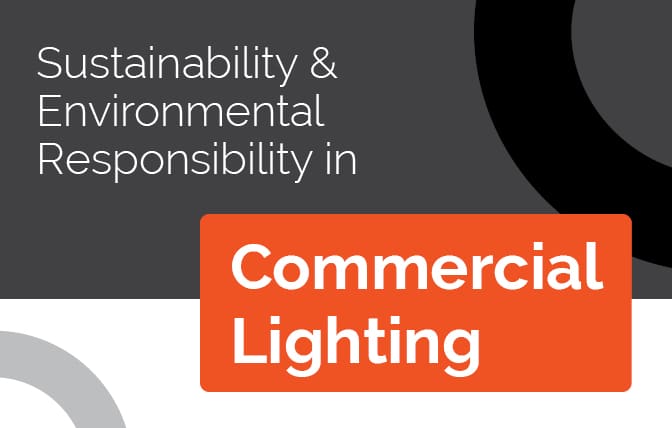Latest News
Sustainability and Environmental Responsibility in Commercial Lighting

Sustainability refers to the ability to maintain ecological balance by meeting current needs without compromising future generations’ ability to meet their needs. Environmental responsibility, on the other hand, is the commitment of businesses to reduce their impact on the environment by adopting eco-friendly practices. In commercial lighting, this translates to using energy-efficient lighting systems, minimising waste, and selecting environmentally friendly materials.
Importance of Sustainable Commercial Lighting
Energy Efficiency
Sustainable commercial lighting is designed to consume less energy compared to traditional lighting systems. Energy-efficient lighting reduces the demand for electricity, which in turn decreases the consumption of natural resources used to generate power. This helps to alleviate the strain on the environment and conserve resources for future generations.
Reduced Carbon Footprint
By using sustainable lighting solutions, businesses can significantly reduce their carbon footprint. Traditional lighting systems, like incandescent and halogen bulbs, emit large amounts of carbon dioxide and other greenhouse gases. Switching to eco-friendly lighting options helps mitigate the harmful effects of these emissions on the environment.
Cost Savings
Although the initial investment for sustainable lighting systems may be higher, the long-term cost savings are significant. Energy-efficient lighting solutions typically have a longer lifespan, require less maintenance, and consume less power, resulting in substantial cost savings over time.




Types of Sustainable Commercial Lighting
LED Lighting
Light Emitting Diode (LED) lighting is a popular choice for sustainable commercial lighting due to its energy efficiency and long-life span. LEDs consume significantly less power than traditional lighting systems and can last up to 25 times longer than incandescent bulbs. Moreover, they do not contain hazardous materials like mercury, making them a more environmentally friendly option.
Solar-powered Lighting
Solar-powered lighting systems harness the sun’s energy to power lights, making them an eco-friendly and cost-effective solution. These systems can be used both indoors and outdoors, reducing the reliance on grid electricity and decreasing carbon emissions.

Smart Lighting Systems
Smart lighting systems, such as Casambi use advanced technology, such as sensors and automation, to optimize energy consumption. These systems can detect occupancy, adjust brightness based on natural light levels, and be controlled remotely, making them an energy-efficient choice for commercial spaces.

Best Practices for Implementing Sustainable Commercial Lighting
Choosing High-quality Lighting Solutions
Investing in high-quality, energy-efficient lighting products such as Mondolux HE Series which ensures long-lasting performance and reduced maintenance costs.

Maximising Natural Light
Utilising natural light is an eco-friendly and cost-effective way to illuminate commercial spaces. Lighting design strategies, such as taking large windows and skylights into consideration can help maximise the use of natural light and reduce the need for artificial lighting.
Regular Maintenance
Maintenance of lighting systems is crucial to ensure optimal performance and energy efficiency. Regular cleaning, timely replacement of worn-out components, and upgrading outdated systems can help businesses maintain sustainable lighting practices.
Sustainability and environmental responsibility in commercial lighting are vital for businesses aiming to reduce their environmental impact and save on energy costs. By adopting energy-efficient lighting solutions like LEDs, solar-powered lighting, and smart lighting systems, companies can contribute to a more sustainable future. As technology advances, businesses can look forward to even more innovative and eco-friendly lighting solutions to meet their needs.
Do you need assistance with your commercial lighting requirements? We are here to help you find the best solutions for your specific needs. Contact us today and let us help you create a brighter, more sustainable future for your business.
We're a Casambi certified commissioning partner